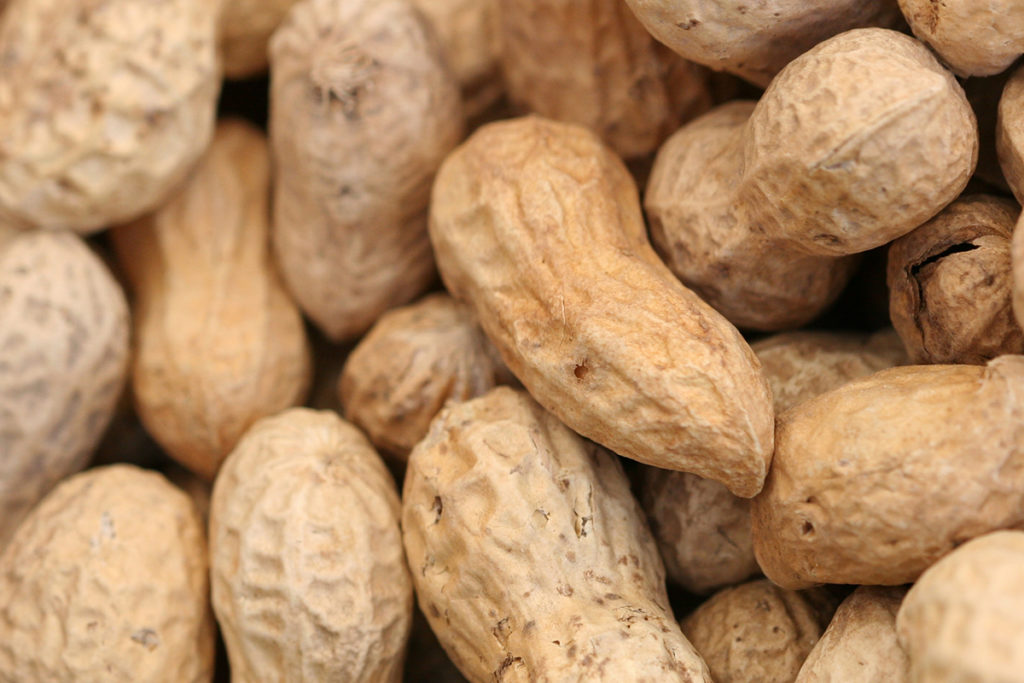Peanuts

You might not be able to tell by looking at it, but the peanut is actually a member of the legume family, making it more of a pea or bean than a nut, botanically speaking. Originating in South America, the peanut was grown commercially in the US in the 1800s, when it was used for oil, as a cocoa substitute, and occasionally for food or livestock feed. Sixty years later, during the Civil War, soldiers turned to peanuts as a quick, inexpensive snack, and they returned home with a taste for the nut, leading to the popularity of roasted peanuts at baseball games and circuses. Now the peanut is one of the most popular and well-loved nuts across the country, contributing more than $4 billion to the US economy each year.
As equally delicious in a spicy dipping sauce for chicken skewers as it is in a chocolate-drizzled brittle, the peanut blends effortlessly into a wide array of recipes, and is sure to please children and adults alike. The peanut contains 25% more protein than any other true nut, boasts an antioxidant count that rivals most fruits, and is loaded with heart-healthy fats that are associated with a reduced risk of cardiovascular disease.
